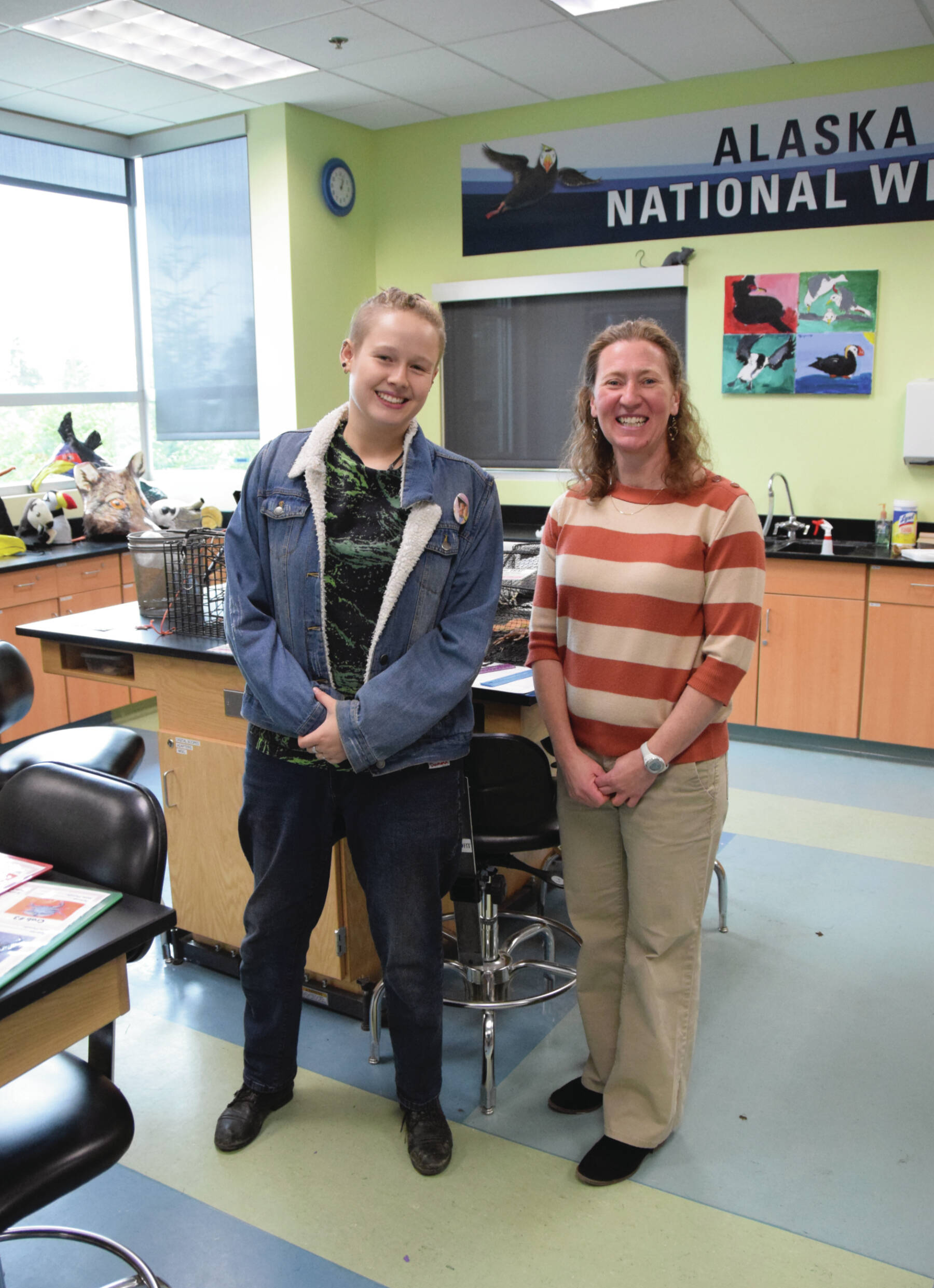A day ahead of European Green Crab Awareness Day, Jasmine Maurer with the Kachemak Bay National Estuarine Research Reserve on Thursday, July 18, gave a public presentation about the invasive species at the Islands and Oceans visitor center.
The goal of the awareness day, which took place July 19, is to raise community knowledge about the species, including how to identify the crabs and report new sightings to an appropriate management agency. The Alaska Department of Fish and Game provides several suggestions for how to join the Alaska green crab early detection monitoring network and assist with community-monitoring efforts. More information is available on their website at https://www.adfg.alaska.gov/index.cfm?adfg=invasiveprofiles.europeangreencrab_getinvolved.
Keksi Geurts, an undergraduate scholar from the University of Hawaii visiting the Kachemak Bay campus of University of Alaska Anchorage with a NOAA Hollings scholarship, also presented about the crab at the event.
Though green crabs are not currently found in dense populations in Southcentral, their numbers are spreading up the Pacific West Coast and increasing in Alaska. Green crabs can cause significant ecosystem disruption due to their rapid expansion, aggressive behavior and a voracious appetite.
Speakers discussed the crabs’ ability to disperse through ocean currents, their tolerance of various salinity and temperature conditions, and their destruction of habitat, food sources and eelgrass beds.
A multifaceted approach is necessary to effectively monitor and manage invasive green crab populations, including trapping and removal programs, the speakers said. The importance of understanding and monitoring marine ecosystems to identify changes and protect them was also emphasized.
According to Geurts’ presentation and confirmed by Maurer, the species have not yet been found in Kachemak Bay. They have currently only been in Southeast Alaska — in Metlakatla in 2022 and a few months ago in Ketchikan.
Some of the other topics brought up in the presentations were different levels of environmental tolerance depending on the age of the animal from molts to adults and how that might influence survival based on conditions such as ocean currents and water temperature.
Colder water temperature in Alaska is what originally provided some protection from the invasive species because the larvae are more sensitive than adults. But, as Geurts pointed out, climate change and warming water may decrease this protection. She also noted the species has a highly adaptive capacity and each generation becomes more tolerant to where it is living.
An audience member questioned if the species is edible. They are, but are without much meat on the bodies, according to Geurts.
Maurer brought a prop to the presentation regarding the species edibility, “The Green Crab Cook Book: An Invasive Species Meets a Culinary Movement.”
Originally published in 2019, the book was written and edited by Mary Parks and Thanh Thai. It was published on the East Coast where green crab invasion has been a problem for much longer than the West Coast. More information about the cookbook and research and education on the East Coast invasion can be found at www.greencrab.org/cookbook.
Maurer’s presentation provided more general information on invasive marine species, including how they are transferred, such as in unprotected ship ballast water. She also provided more information on habitat, what the animal looks like and how to identify it and how the animal threatens local species. She gave a history of invasion in the northeast Atlantic. The crabs were first detected in the Pacific in San Francisco in 1989.
Maurer also provided information on the Alaska Invasive Species Partnership with details on communities and organizations that contribute to early detection, response and preparedness efforts.
Following the presentations a community awareness lab was also provided at the Alaska Islands and Oceans visitor center.


